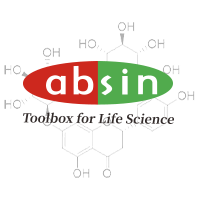Product Details
Product Details
Product Specification
| Synonym | Human Chitinase 3-like 1 ELISA Kit |
| Description |
Detection Principle: This kit uses double antibody sandwich ELISA technology. The specific anti human chi3l1 capture antibody was pre coated on a high affinity microplate. Add the standard, the sample to be tested and the biotin labeled detection antibody into the wells of the enzyme plate in turn, shake well and mix well, and then place it at room temperature for 2 hours of incubation process. Chitinase 3-like 1/chi3l1 in the sample is combined with the solid-phase antibody and the detection antibody. After washing sufficiently to remove free and unbound components, streptavidin HRP (sa-hrp) labeled with horseradish peroxidase was added. After washing again, TMB chromogenic substrate was added and incubated at room temperature in the dark to develop color. The depth of color response is positively correlated with the concentration of LH in the sample. Add stop solution to stop the reaction, and use a microplate reader to measure the absorbance value at 450 nm detection wavelength (correction wavelength 570-630 nm) Detection Type: Double antibody sandwich method Form: Pre coated 96 well plate Test Sample Type: cell supernatant, serum, plasma Loading Amount: 100 μ L Kit Components: a copy of pre coated 96 well plate, standard, chi3l1 detection antibody, standard dilution, detection buffer, TMB chromogenic substrate, washing solution, termination solution, sa-hrp, plate sealing membrane and instructions Sensitivity: 1.10pg/ml Detection Range: 15.63-1000 pg/ml Recovery Range: 80-110% Storage Method: 2-8 ℃ Standard Curve:
Background: Chitinase 3-like protein 1 (chi3l1)It is secreted by many types of cells, including macrophages, chondrocytes and some tumor cells. The exact physiological function of chi3l1 is still unknown, but it is involved in development and inflammatory diseases, such as asthma and tumors. Chi3l1 is a cytokine that promotes Th2 and is expressed at high levels in the tumor microenvironment and serum of tumor patients. Elevated chi3l1 expression is strongly correlated with the development stage and outcome of various types of tumors, indicating that chi3l1 can be used as a biomarker of disease severity. In the animal model of glioblastoma multiforme, treatment with neutralizing antibody of chi3l1 is effective. Chi3l1 can promote angiogenesis through VEGF dependent and - independent pathways. In γ Under radiation, chi3l1 can also enhance tumor survival. |



